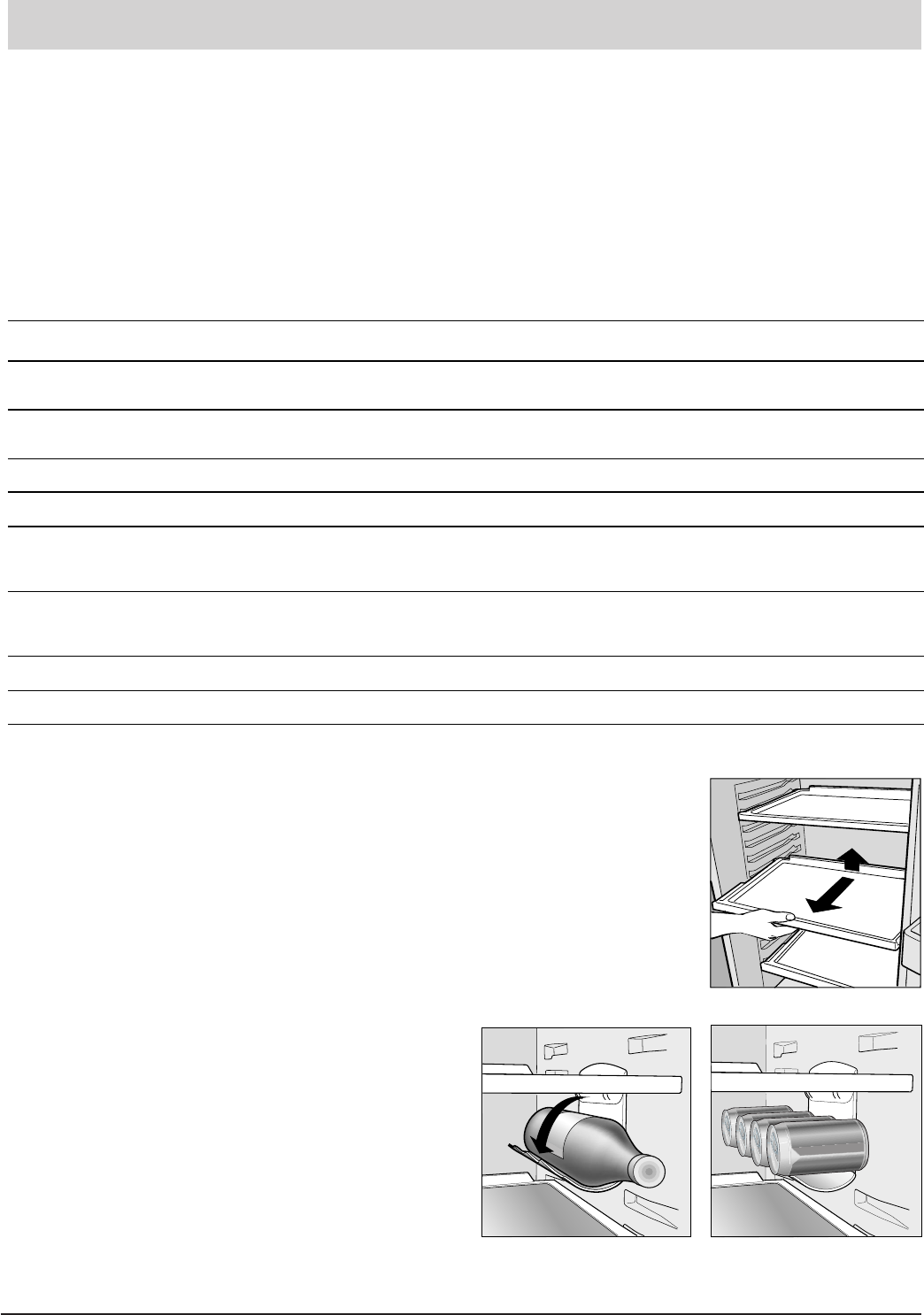
6
- The air circulates naturally, with the colder air falling be-
cause it is heavier. This is the reason why meat and cheeses
should be placed above the vegetable crisper.
- Please follow our instructions carefully on maximum stor-
age time: any food, even the freshest, will not remain edible
for any extended amount of time.
- Contrary to popular belief, cooked foods do not store any
longer than raw food.
- Do not place liquids in containers without covering them
because this will lead to an increase in the level of moisture
within the refrigerator, causing the formation of frost.
- Be careful not to place containers (plastic or glass), food or
other objects in direct contact with the cooling area of the
back wall of the refrigerator. This could harm the food, in-
crease energy consumption and facilitate the formation of
condensate (on food, containers, etc.).
- The refrigerator compartment is equipped with convenient,
removable shelves (Fig. 1) which can be adjusted for height
using the shelf guides. This allows you to place even large
containers and foodstuffs in the refrigerator.
Fig. 1
HOW TO USE THE REFRIGERATOR COMPARTMENT...
The temperature control automatically regulates the
temperature inside the appliance
It is recommended that a medium setting be used.
To increase the amount of space, optimize arrangement and
improve appearance, this appliance has a “cooling area”
located within the back panel of the refrigerator compart-
ment. When the appliance is operating, this panel may be
covered with frost or droplets of water depending on whether
the compressor is operating or not. Do not be concerned
about this! The refrigerator is operating normally.
If the temperature control is positioned on higher settings
while the refrigerator is heavily filled and the ambient tem-
perature high, the appliance may run continuously, resulting
in the formation of frost on the back cooling area. This will
lead to an increase in energy consumption.
To avoid this situation, just turn the temperature con-
trol to a lower setting so that the appliance defrosts
automatically.
What Not to Store in the Refrigerator
Garlic (transmits odour), onions and leeks.
Bananas (they will turn black).
Citrus fruits.
Potatoes and root vegetables (store in dark, dry places).
Storing Food in the Refrigerator Com partm ent
Food Storage Time Location in the Refrigerator
Wrapped meat and cleaned fish
(use cling film or plastic bags)
2 or 3 days
On the shelf above the vegetable
crisper (which is the coldest area).
Fresh cheese 3 or 4 days
On the shelf above the vegetable
crisper (which is the coldest area).
Eggs 1 month In special egg rack on door.
Butter, margarine On any shelf.
Cooked or pre cooked food
(pack in air-tight containers and when cool store
in refrigerator)
3 or 4 days On any shelf.
Sausages, salami, sandwich meats in general,
fresh pasta, custards,puddings, chocolates, cream
pastries, bread, dry pastries, red tom atoes
3 or 4 days On any shelf.
Bottled products, milk, drinks, yoghurt On special door shelves.
Fruits andvegetables In fruit and vegetable crisper..
Fig. 2
Fig. 3
The side bottle rack can be
used either for storing a bottle
(Fig. 2) or several cans (2-4)
placed horizontally (Fig. 3). If
not in use, the bottle/can rack
can be tipped up and away
to make more room inside the
refrigerator.














